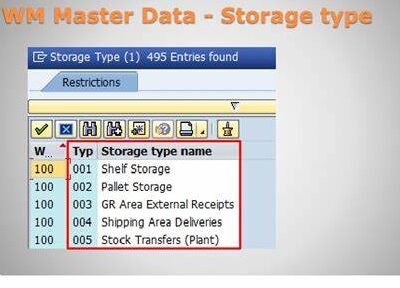Mastering Data Storage in Hybrid Environments – has emerged as a transformative solution. It offers organizations the flexibility to store data across multiple platforms—be it on-premises, in the cloud, or at the network’s edge. While hybrid data storage opens new doors for businesses in terms of scalability, performance, and cost management, it also introduces unique challenges. In this comprehensive guide, we will explore everything you need to know about hybrid data storage, covering types, management strategies, security measures, and optimization techniques.
Table of Contents
ToggleWhat is Data Storage in Hybrid Environments?
Hybrid environments represent a mix of traditional on-premises storage, cloud storage, and edge storage. The goal of a hybrid environment is to blend the best of all three approaches, allowing businesses to optimize for factors like cost, security, performance, and accessibility.
With data storage in hybrid environments, organizations can store frequently used data on-premises for speed and accessibility, offload less critical data to the cloud to save costs, and keep latency-sensitive data at the edge for real-time processing. However, orchestrating this balance requires a deep understanding of each storage type and its benefits and limitations.
On-premises Storage
On-premises storage refers to the practice of storing data within an organization’s internal infrastructure. This method gives companies full control over their data, offering robust security and reduced latency. It is commonly used in highly regulated industries or in environments where low-latency access is critical.
Examples of on-premises storage solutions include:
- Hard Drives (HDDs)
- Solid-State Drives (SSDs)
- Storage Area Networks (SANs)
Advantages of On-premises Storage:
- Data Security: Direct control over data means fewer vulnerabilities to external threats.
- Low Latency: Data is readily accessible with minimal delays.
- Customizability: The system can be fine-tuned to specific business needs.
However, on-premises storage requires significant upfront capital investments and ongoing maintenance costs. It also depends heavily on IT expertise for management and troubleshooting.
2 Cloud StorageCloud storage allows organizations to store data in remote data centers managed by providers like Amazon Web Services (AWS), Microsoft Azure, and Google Cloud Platform (GCP). It offers scalability, flexibility, and pay-as-you-go pricing, making it a cost-effective solution for companies with fluctuating storage needs.
Advantages of Cloud Storage:
- Scalability: You can increase or decrease storage capacity on demand.
- Cost-Efficiency: Pay only for what you use.
- Disaster Recovery: Cloud storage facilitates off-site backups, making data recovery easier in case of system failure.
However, challenges like data security, latency, and vendor lock-in should be carefully considered when choosing cloud storage providers.
Edge Storage
Edge storage refers to storing data close to where it is generated—at the “edge” of the network. It is an essential component in applications that demand real-time processing, such as the Internet of Things (IoT), autonomous vehicles, and video surveillance.
Advantages of Edge Storage:
- Low Latency: With data stored closer to end-users, real-time access is faster.
- Reduced Bandwidth Usage: By processing data locally, edge storage reduces the need for large volumes of data to be transmitted to the cloud or data centers.
- Increased Availability: Data remains accessible even during network outages.
Edge storage, while improving performance and availability, often involves high costs due to specialized hardware and may introduce complexities in managing dispersed data locations.
Data Management Strategies for Hybrid Environments
Data management in hybrid environments is crucial due to the diverse nature of storage systems. When organizations use a combination of on-premises, cloud, and edge storage, they need to establish robust management strategies to ensure efficiency, security, and data consistency.
Data Replication
Data replication is a process where data is copied and stored in multiple locations to ensure availability and redundancy. It is critical in hybrid environments to minimize the risk of data loss.
Best Practices for Data Replication:
- Asynchronous Replication: Suitable for low-latency applications where minor delays are acceptable.
- Synchronous Replication: Ideal for mission-critical applications that require real-time data consistency.
- Monitor Replication Processes: Set up monitoring tools to identify any replication failures or discrepancies.
Data Synchronization
Data synchronization ensures that changes made in one storage location are automatically mirrored across all other locations. This is particularly important in hybrid environments where data is spread across multiple storage types.
Data Synchronization Techniques:
- Unidirectional Synchronization: Data flows in one direction from a master location to other storage points.
- Bidirectional Synchronization: Data updates flow between locations to keep all copies consistent.
- Automated Syncing: Automation tools reduce the need for manual intervention and help prevent errors in synchronization.
Data Backup in Hybrid Environments
A hybrid approach to data storage requires comprehensive backup strategies that cover both on-premises and cloud systems.
Effective Backup Techniques:
- Incremental Backups: Only data that has changed since the last backup is stored, reducing storage space requirements.
- Full Backups: A complete snapshot of all data is taken periodically to ensure maximum data recovery options.
- Testing Backup Systems: Regularly test your backups to ensure they work as intended and data can be recovered if needed.
Security Measures for Hybrid Data Storage
When managing data across multiple environments, security becomes more complex but remains essential. Data storage in hybrid environments requires robust security protocols to protect sensitive information.
Key Security Measures:
- Encryption: Encrypt data both in transit and at rest to prevent unauthorized access.
- Access Controls: Implement strict identity and access management (IAM) policies to limit who can access specific data.
- Intrusion Detection Systems (IDS): Continuously monitor for unauthorized access or security breaches.
Optimizing Data Storage in Hybrid Environments
Optimizing data storage in hybrid environments can significantly reduce costs, enhance performance, and improve scalability. The key is to implement techniques that maximize storage efficiency without compromising data integrity.
Data Compression
Data compression reduces the size of files stored, minimizing storage space requirements. This is particularly beneficial in cloud storage scenarios where cost is directly tied to storage volume.
Deduplication
Deduplication identifies and removes duplicate copies of data, ensuring that only one copy of each unique piece of data is stored. This technique is effective for backup systems where multiple copies of the same data may exist.
Tiering
Storage tiering involves classifying data based on its importance and access frequency. High-priority data is stored on fast-access media (like SSD), while less frequently accessed data is moved to slower, more affordable options like cloud storage.
Conclusion
Mastering data storage in hybrid environments is essential for organizations that want to take advantage of the flexibility and scalability offered by multiple storage systems. By understanding the different types of storage—on-premises, cloud, and edge—companies can develop an effective strategy that meets their unique needs. Moreover, robust data management, security protocols, and optimization techniques are crucial in ensuring that data remains secure, accessible, and cost-effective in hybrid environments.
As businesses continue to generate massive amounts of data, the ability to effectively manage hybrid data storage will be a critical differentiator. Whether you are an enterprise seeking to scale or a small business looking to optimize costs, hybrid data storage offers the perfect balance between flexibility and control.
For more information on how to implement hybrid storage solutions, visit this cloud storage resource.
FAQs: Data Storage in Hybrid Environments
What are the key benefits of hybrid data storage?
Hybrid environments offer flexibility, scalability, improved performance, and cost-effectiveness by allowing data to be stored across multiple platforms—on-premises, cloud, and edge.
How do you secure data in hybrid environments?
To secure hybrid environments, implement encryption, use access controls, and deploy intrusion detection systems (IDS) to protect sensitive data.
What optimization techniques work best for hybrid storage?
Data compression, deduplication, and storage tiering are highly effective techniques for optimizing storage costs and improving performance in hybrid environments.




